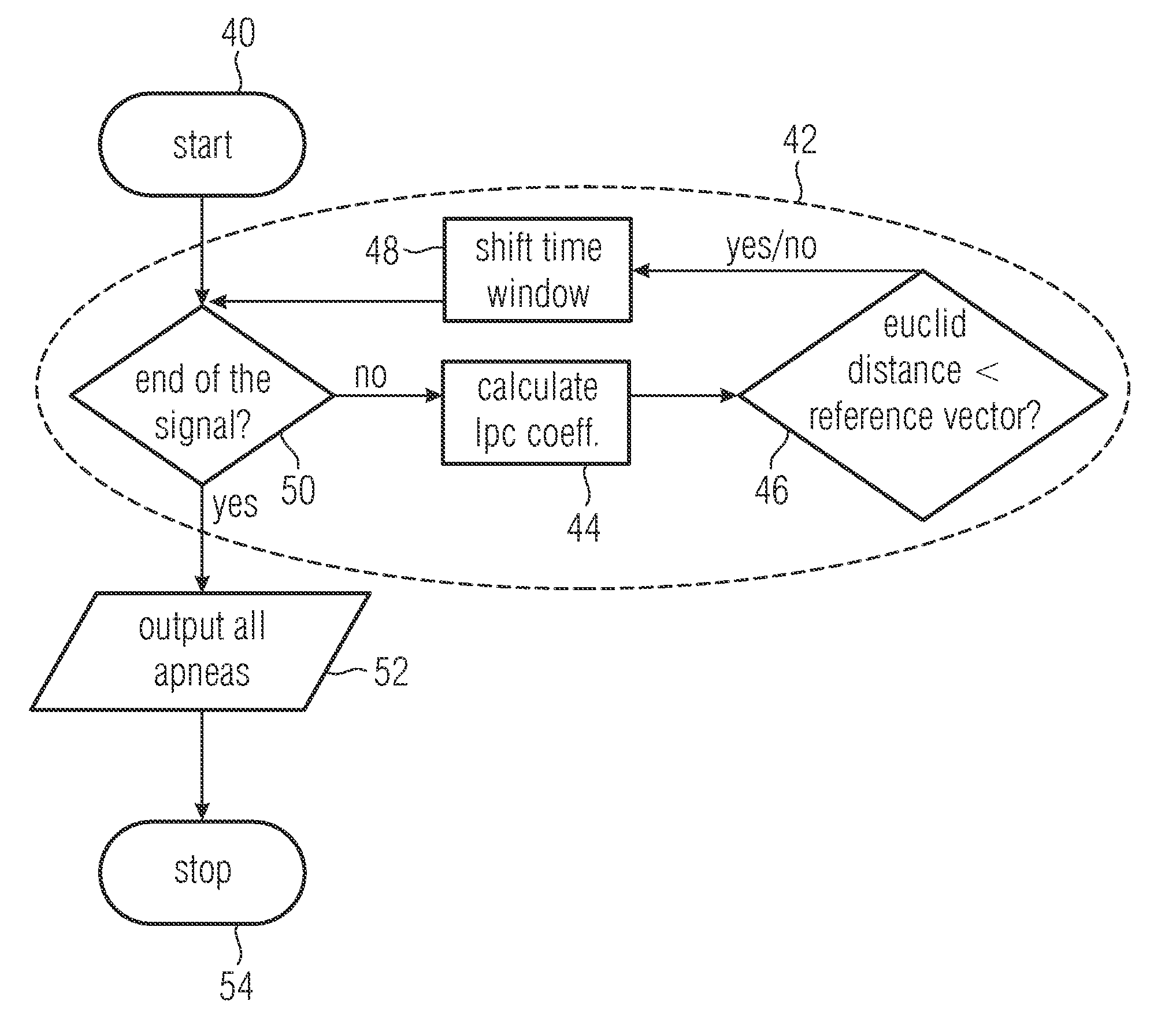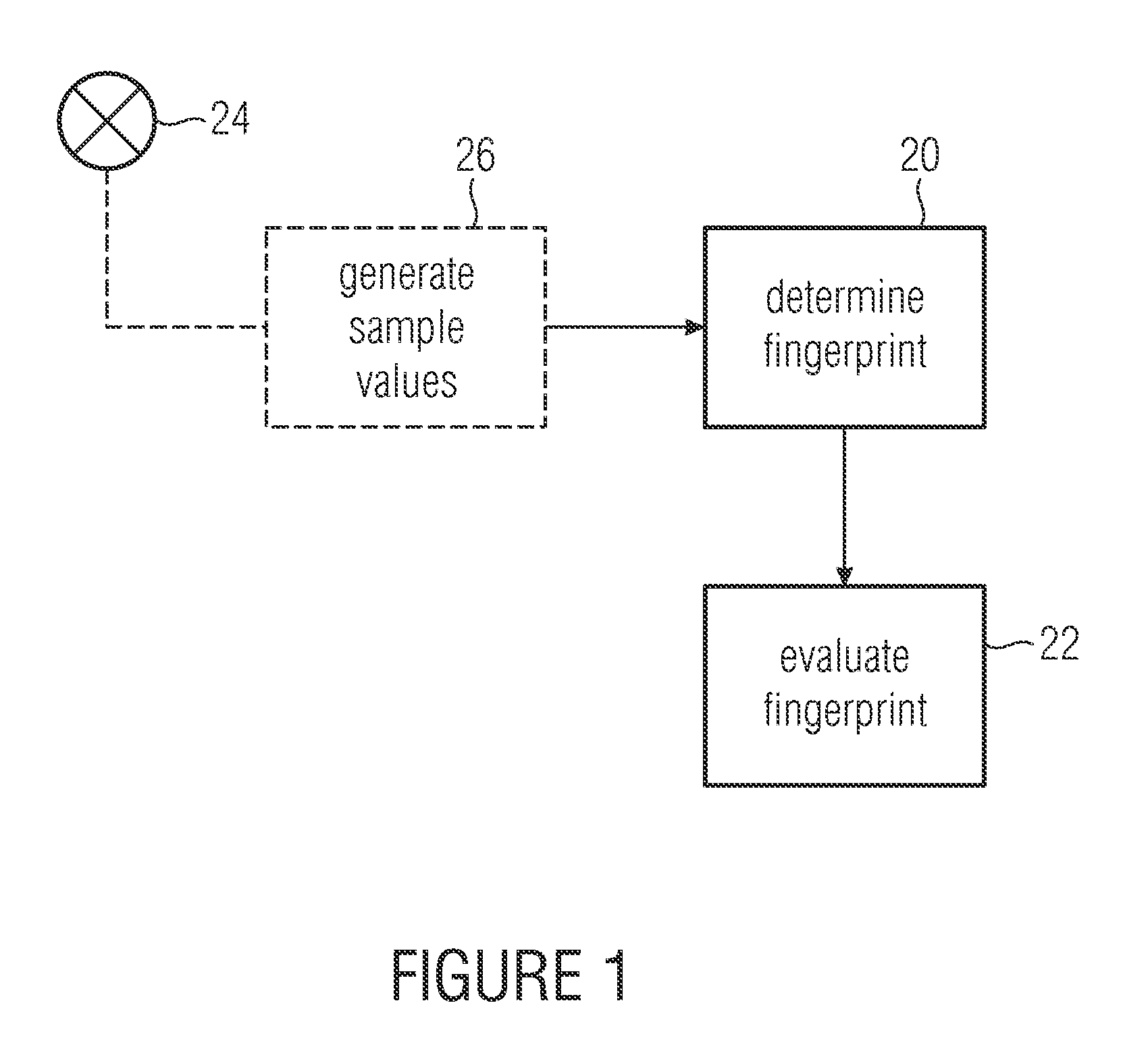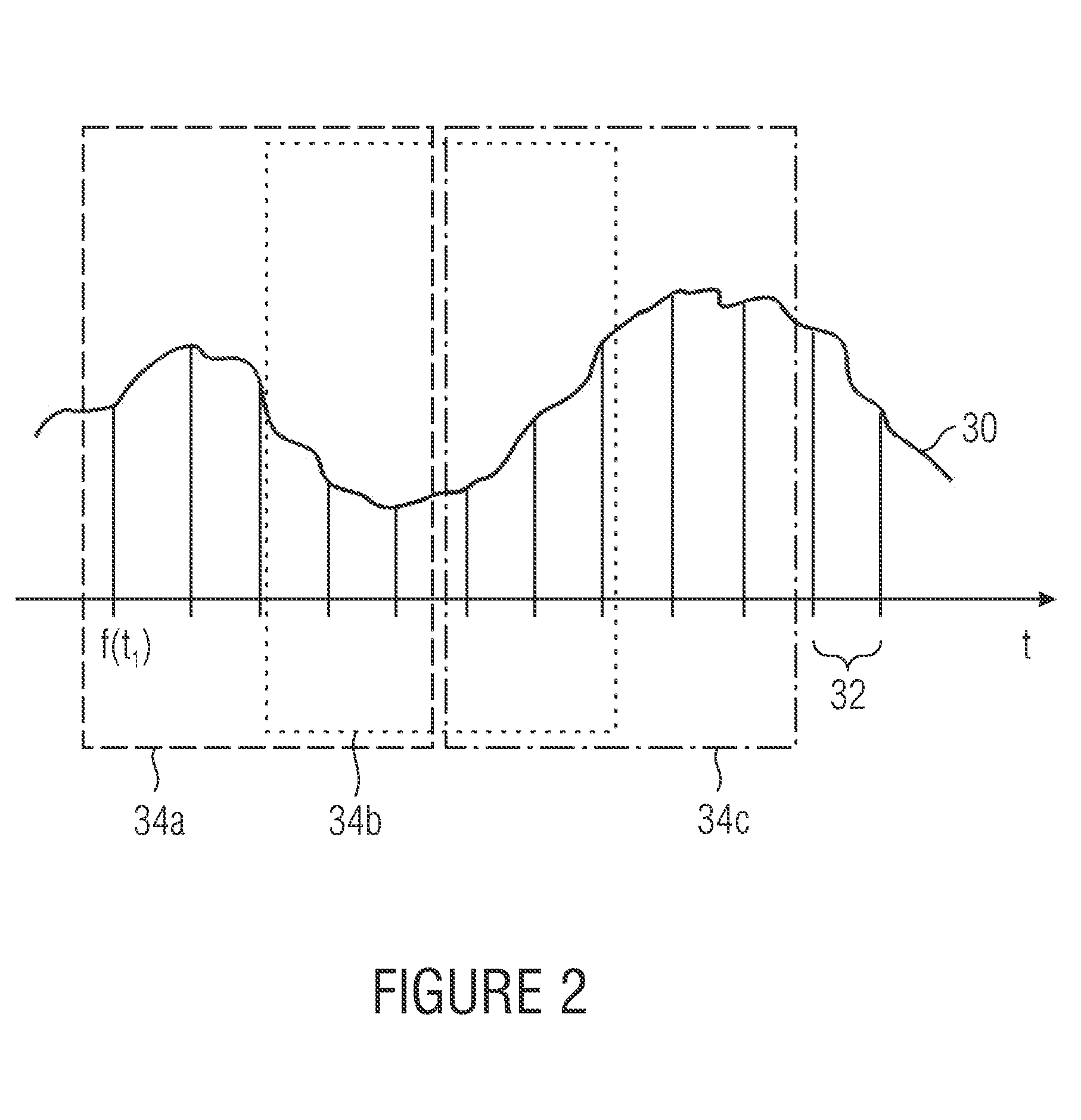Detection of the beginning of an apnea
a sleep disorder and detection technology, applied in the field of sleep disorders, can solve the problems of affecting the quality of life and ability of the affected people, affecting the brain, and further affecting the patient's health, so as to prevent the onset of apnea, reduce the amount of computational effort, and reduce the effect of computational effor
- Summary
- Abstract
- Description
- Claims
- Application Information
AI Technical Summary
Benefits of technology
Problems solved by technology
Method used
Image
Examples
Embodiment Construction
[0036]FIG. 1 shows an example of an apparatus according to the invention for detecting the beginning of an apnea, including an analyzer 20 as well as evaluation means 22. Moreover, FIG. 1 shows an optional microphone 24 connected to sampling means 26, which also is optional.
[0037]The analyzer 20 determines a predetermined number of fingerprint coefficients for a number of sample values corresponding to a time interval of the breathing noise, which may in principle be chosen freely, from the series of sample values. In an embodiment of the present invention, the length of this time interval, however, lies between 100 ms and 500 ms, because it has been realized that a typical time duration for an event preceding apnea is 200 ms.
[0038]In the following, the use of LPC coefficients as fingerprint coefficients is to be assumed exemplarily for illustrating the inventive concept. In the LPC, a (k+1)th sample value is formed as a linear combination of the k sample values preceding the curren...
PUM
 Login to View More
Login to View More Abstract
Description
Claims
Application Information
 Login to View More
Login to View More - R&D
- Intellectual Property
- Life Sciences
- Materials
- Tech Scout
- Unparalleled Data Quality
- Higher Quality Content
- 60% Fewer Hallucinations
Browse by: Latest US Patents, China's latest patents, Technical Efficacy Thesaurus, Application Domain, Technology Topic, Popular Technical Reports.
© 2025 PatSnap. All rights reserved.Legal|Privacy policy|Modern Slavery Act Transparency Statement|Sitemap|About US| Contact US: help@patsnap.com



